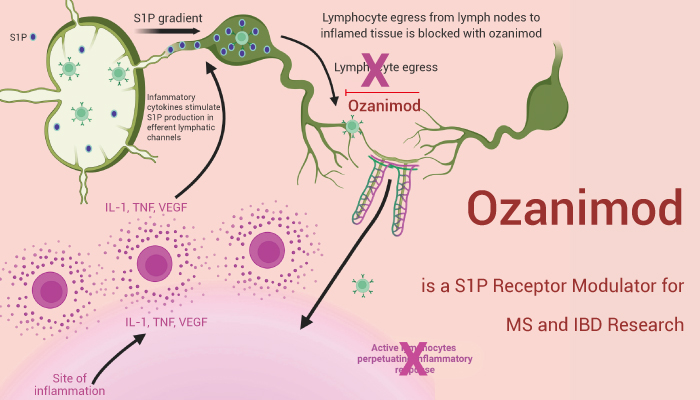LPL Receptor (Lysophospholipid Receptor) group are members of the G protein-coupled receptor family of integral membrane proteins that are important for lipid signaling. In humans, there are eight LPL receptors, each encoded by a separate gene. LPL receptor ligands bind to and activate their cognate receptors located in the cell membrane. Type: LPAR1, LPAR2, LPAR3, LPAR4, LPAR5, LPAR6, S1PR1, S1PR2, S1PR3, S1PR4, S1PR5. Among them, sphingosine-1-phosphate (S1P) is formed from ceramide, which is composed of a sphingosine and a fatty acid.
S1P receptor plays a key role in the immunomodulatory and direct central nervous system (CNS) effects associated with multiple sclerosis (MS). The predominant S1P receptor involved in lymphocyte trafficking in MS is S1P1, which is expressed on B and T cells. When S1P1 is exposed to agonists, it is rapidly down-regulated from the plasma membrane and internalized into intracellular compartments. In contrast to S1P1, S1P5 expression is more restricted and, within the CNS, is limited to oligodendrocytes, the myelinating cells.
Ozanimod (also known as RPC-1063), an orally active sphingosine 1-phosphate (S1P) receptor modulator.
Meanwhile, Ozanimod binds with high affinity selectively to S1P1 and S1P5. However, Ozanimod profiling revealed a species difference in its potency for S1P5 in mouse, rat, and canine compared with that for human and monkey. Hence, in the experimental autoimmune encephalomyelitis model, Ozanimod (0.05-1 mg/kg) exposures sufficient to engage S1P1, but not S1P5, results in reduced circulating lymphocytes and reduces inflammation, and reduces circulating levels of the neuronal degeneration marker, neurofilament light. Moreover, in the demyelinating cuprizone model, Ozanimod (5 mg/kg) prevents axonal degradation and myelin loss during toxin challenge but does not facilitate enhanced remyelination after intoxication. Ozanimod has the potential for the research of MS, including clinically isolated syndrome, relapsing-remitting disease, and active secondary progressive disease.
To sum up, Ozanimod is an orally active S1P1 agonist that has the potential for the relapsing multiple sclerosis research.
References:
[1] Julie V Selkirk, et al. J Pharmacol Exp Ther. 2021 Dec;379(3):386-399.
